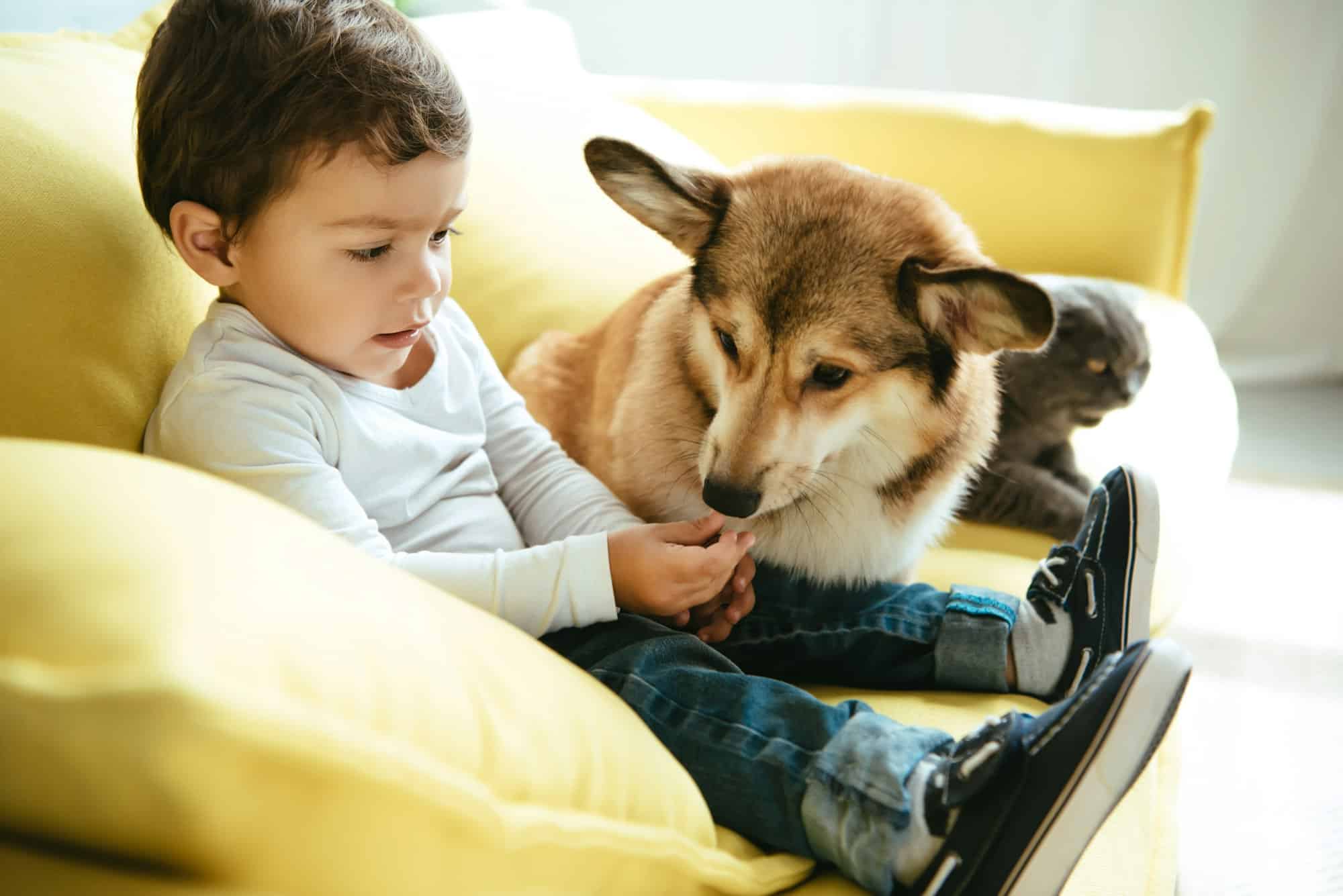For any cat parent, the well-being and happiness of their furry friends is paramount. Regardless of whether your pet is a curious kitten or a cat with limited vision, keeping them engaged and safe is crucial. In such cases, a well-designed indoor playground can be a lifeline. This article aims to unravel the secrets of building an engaging and safe indoor playground for your visually challenged pet cat. We will explore various aspects including selecting the right toys, introducing appropriate enrichment activities, and establishing a safe and stimulating environment.
Choosing the Right Toys
The first step in creating an engaging indoor playground for your cat is choosing the right toys. Toys can provide cats with hours of entertainment, mental stimulation, and physical exercise. However, when dealing with a cat with limited sight, the choice of toys should be more tactile and audible, rather than visual.
Sujet a lire : How to Choose the Perfect Sized Tank for a Beginner’s Planted Freshwater Aquarium?
Typical cat toys may not serve the purpose as they are often visually stimulating with bright colors and fast movements. For a cat with diminished sight, toys that offer different textures, make noise, or are scented can be more attractive. Toys filled with catnip, small sized balls with bells inside, or toys that emit a crinkling sound when touched are excellent choices.
Additionally, puzzle feeders that release food when interacted with can also be a great option. These toys not only engage the cat in play but also stimulate their sense of smell and touch, while rewarding them with their favorite treat.
A lire aussi : How to Develop a Consistent Grooming Schedule for a Dog Breed with Fast-Growing Nails?
Ensuring Cat Enrichment
Enrichment activities are crucial for any pet, but for cats with impaired vision, they become essential. These activities can help stimulate their remaining senses and keep them mentally active.
A good way to introduce enrichment is through food-based games. Hide treats around the playground, encouraging the cat to use their sense of smell and touch to find them. This will not only provide mental stimulation, but also give them a sense of accomplishment when they locate the hidden treats.
Another form of enrichment is interactive playtime. Spend time playing with your cat, using toys that make noise or have different textures. This will enable them to rely on their other senses for play, while also strengthening your bond with them.
Creating a Safe Environment
Creating a safe haven for your visually impaired cat to play and explore is paramount. While creating an indoor playground, you need to ensure it is free of hazards that could potentially harm your pet.
Ensure that all toys and play equipment are safe and non-toxic. Avoid toys with small parts that may be swallowed, or sharp edges that could injure your cat. Additionally, secure all loose wires or cords and remove any poisonous plants from the playground.
To aid navigation, try to keep the furniture and objects in the playground consistent. Cats with limited vision rely on memory and familiarity to move around. Therefore, frequently rearranging the furniture might confuse them.
Making Outdoor Time Safe
Even though you are building an indoor playground, your cat will benefit from some supervised outdoor time. By taking a few precautions, you can make sure your visually impaired cat enjoys the outdoors safely.
A fenced-in yard or a catio would be ideal. If these are not possible, consider using a leash and harness when taking your cat out. This will allow them to explore safely, while under your supervision.
Place bird feeders or wind chimes in your yard, as the sounds can provide stimulation for your cat. Just remember to always keep an eye on them and never leave them unsupervised.
Keep the Engagement Consistent
The key to a successful indoor playground for a cat with limited vision is consistency. Keep the playtimes regular, so your cat knows when to expect fun and engagement.
Regular playtimes not only stimulate your cat but also provide them with a routine, which is important for visually impaired cats. It helps them feel secure and reduces anxiety.
Remember to reply to your cat’s cues. If they seem uninterested in a toy or activity, don’t push it. Try something different. What works one day may not work the next. Stay flexible and patient, and enjoy the process of creating a safe, engaging indoor playground for your beloved pet.
Remember, your love and attention are the most enriching experiences for your visually impaired cat. Your time, patience, and understanding will help them lead a satisfying and happy life.
Introducing Fun and Stimulating Cat Tunnels
One of the most engaging elements you can add to an indoor playground for your visually-challenged cat is a cat tunnel. Cat tunnels can provide a safe and enticing environment that promotes both physical exercise and mental stimulation.
Cats love to explore and hide in enclosed spaces, and a tunnel can cater to this instinct, providing them with a sense of security and a place to retreat. For a cat with limited vision, it offers a tactile experience as they can touch and feel their way through the tunnel. Moreover, through regular play in the tunnel, your cat will be able to memorize its layout and establish a safe route for themselves, further enhancing their confidence.
When selecting a tunnel for your cat, consider those that are made of durable, non-toxic materials. Avoid tunnels with any loose parts or sharp edges that could potentially cause harm. Furthermore, some cat tunnels come with additional features such as crinkle paper and hanging toys, which can make a delightful noise that stimulates auditory senses and encourages play.
Introducing a tunnel into your cat’s play routine can be beneficial, but remember to first let your cat become accustomed to its new plaything. Start by allowing them to explore the tunnel at their own pace, and gradually make it a part of their regular playtime.
Incorporating a Safe and Comfortable Resting Place: The Importance of a Litter Box and a Scratching Post
In the midst of all the play and enrichment, it’s important not to overlook the basics. A comfortable resting place and a litter box that your cat can easily locate are essential elements in a cat’s playground.
Cats with limited vision may struggle to locate their litter box, especially if it’s frequently moved. It’s best to place the litter box in a quiet and consistent location, where your cat can easily find it. Opt for a litter box with low sides so your cat can easily step in and out. Remember not to use scented litter as it might deter your cat from using the box.
A scratching post is another important feature. Scratching is a natural behavior for cats. It helps them stretch their muscles, mark their territory, and keep their claws in good condition. Choose a sturdy, tall scratching post that your cat can fully stretch on. Some cats prefer horizontal scratching posts, so it might be a good idea to offer both options and see which one your cat prefers.
Now, let’s talk about resting places. Cats love to have their own special place to retreat to. Whether it’s a soft bed, a warm blanket, or a cozy corner, make sure your cat has somewhere comfortable to rest after playing. A soft bed with raised edges can offer security and comfort to your visually impaired cat.
Conclusion: Building a Fulfilling Life for Your Blind Cat
Creating an engaging and safe indoor playground for a cat with limited sight might seem challenging, but with careful planning and understanding, it can be achieved. Incorporating the right toys, prioritizing cat enrichment, creating a safe environment, providing outdoor time and keeping the engagement consistent will all contribute towards building a fulfilling life for your visually impaired cat.
Remember, the goal is not just to provide physical exercise but also to keep your cat mentally stimulated, engaged, and content. Each element you introduce in the playground, whether it’s cat tunnels, a litter box, or a a scratching post, should contribute towards enriching your cat’s life.
Most importantly, your steady and loving presence in your cat’s life can bring enormous comfort and joy. Engage in regular play with your cat, respond to their cues, stay patient and understanding. The bond you share with your cat is irreplaceable and can do wonders for their well-being and happiness. After all, your love and attention are the most enriching experiences for your chirpy cat. Your time, patience, and understanding will help your cats lead a satisfying and happy life, regardless of their visual limitations.





